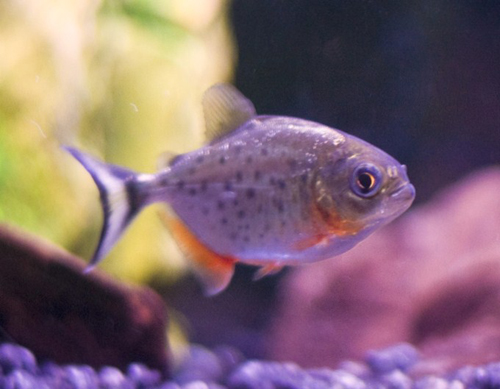A SHOAL of captive-bred baby piranhas has gone on display at an aquarium in Scotland.
The red bellied piranhas were all born at Deep Sea World, in Queensferry, and have now grown large enough to fend for themselves in their own exhibit in the aquarium’s Amazon area.
It’s unusual for piranhas to breed successfully in captivity and keepers are delighted with the progress the youngsters have made since they were born earlier this year.
The baby piranahs were born earlier this year
Deep Sea World’s Aisling Thornton said: “The fact that our shoal of piranhas is breeding successfully is a fantastic indicator that conditions in our Amazon display are just right and mimicking those found in the wild.
“Piranhas may not be everybody’s favourite fish species but the babies, despite their fearsome reputation, are actually really cute and have beautiful markings,” she added.
Found throughout the Amazon, the piranha, or cannibal fish, is among the most famous and most feared inhabitants of the mighty river.
They are reputed to be able to strip the flesh from a cow within minutes. With razor sharp teeth and exceptional jaw strength they can even leave marks on steel.
In the wild piranhas help to keep rivers fresh and healthy by eating animal carcasses. The name piranha comes from the Tupi Indian words ‘pira’ fish and ‘ranha’ teeth.
It’s unusual for the fearsome fish to breed in captivity
Only around half of the 35 species of piranha are carnivores, but when trapped in pools and lakes formed by drying rivers in drought periods, meat eating piranhas will attack and eat all that they can find, even resorting to cannibalism if necessary.
During spawning piranhas pair off and prepare a nest which they will defend, just like the breeding behaviour of many bird species.
The female lays clusters of eggs into a bowl shaped nest created in the sediment and the eggs usually hatch within seven days depending on the temperature of the surrounding water.
After the eggs hatch, both parents guard the brood. The young piranha spend their time feeding and hiding amongst the weeds, joining a shoal once they attain a length of around five centimetres.



